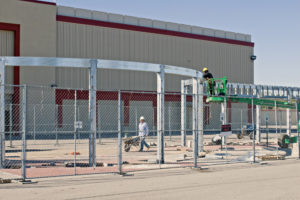
Depending on which phase of the construction process your business fits into, your accounts receivable may take a hit. Contractors dealing with structures and foundation are lucky: typically the first on the site is the first to get paid. Those at the end of the process, such as building finishing contractors, often have a harder time getting paid since they’re standing at the end of the line.
A study conducted by Sageworks broke down the Days Sales Outstanding (DSO) for the construction industry, showing how many days each type of company furnishing labor or materials is typically left waiting for payment. Unfortunately, building finishing contractors seem to have it the worst.
According to Sageworks, building equipment contractors and those doing work in electric, plumbing or HVAC, are experiencing an average DSO of 57 days. In recent years, the DSO for foundation, structure, and exterior contractors has decreased to an average of 63 days.
Building finishing contractors frequently wait the longest. As drywall installation, insulation, flooring, finishing carpentry and painting are usually some of the last stages of a project, the contractors that furnish these types of labor and or materials are also often the last to get paid. Typically, customers will use payments from other projects to pay off their current invoices. If the customer is still waiting to get paid, the building finishing contractors will have to wait as well. Sageworks estimates the average DSO for building finishing contractors to be a whopping 77 days.
There are a few great options that can make a huge difference in battling late payments:
1. Invoice Early and Often
Invoicing as soon as your work is completed is a good way to stay on top of late payers. If the invoice goes unanswered for a few weeks, send a reminder email. If you let the invoice sit, the customer can take this as a sign that you don’t need your money right away and put you at the bottom of the pile of bills due.
2. Implement a Late Payment Fee
Don’t get stuck at the bottom of the barrel. If you make clear in a contract that a late fee will be implemented if the customer fails to pay within a specified timeframe, your invoice will be taken more seriously.
3. Get the Invoice in their Inbox
Sending invoices via snail mail is not the most efficient way to get an invoice to a customer. After waiting the typical 3-5 business days for it to arrive, add on postage fees and the possibility it won’t make it on the right desk (or that it gets lost). Sending the invoice via email ensures it is being sent to the right person and that it will show up in their inbox immediately. Besides, most customers prefer receiving their invoices this way.
4. Use an Automated Accounts Receivable Software
All of these tips can easily be put into practice by using an automated accounts receivable software. The software will log what emails have been sent and what phone calls have been made to easily see what else needs to be done. High-risk clients can also be flagged for future projects.
Waiting 77 days is simply not feasible to maintain a business’ cash flow. Just because you specialize in work that finishes up the project, doesn’t mean you should have to wait months to get paid. Staying on top of your accounts receivable will ensure you lower your Days Sales Outstanding. Visit our resource center here at Anytime Collect to learn more about using accounts receivable software.